Jul 24, 2013 | sculpture, typography
Ole Ukena is a German artist who uses simple, modern conceptual works to make a point. He lives and works between Berlin and Bali, and he’s shown his work all over Thailand, India, Germany and France. Although not all his works involve typography, they do have a distinctly clean look that’s only emphasized with big, bold lettering.
His artist statement reads,
“I am not limiting myself to one medium. I simply can’t. It’s a constant adventure, finding new materials in the countries in which I travel, encountering objects or phrases that can be transformed into specific, meaningful pieces. While my work often displays a strong conceptual nature, I am also very drawn to the intuitive.This balancing energy forces me to step out of my mind and just create. These forces are like my left and right hand. My works try to create a map of the human mind, in an attempt to tell a tale about the very nature of it with all its possibilities, limitations, irritations, and hopes.”
“Burnout Syndrome” burned matches, canvas, 2012
Made up of more than 9,000 matches, the matches in the last WORK‘s are struck and the smoke simmers upwards.
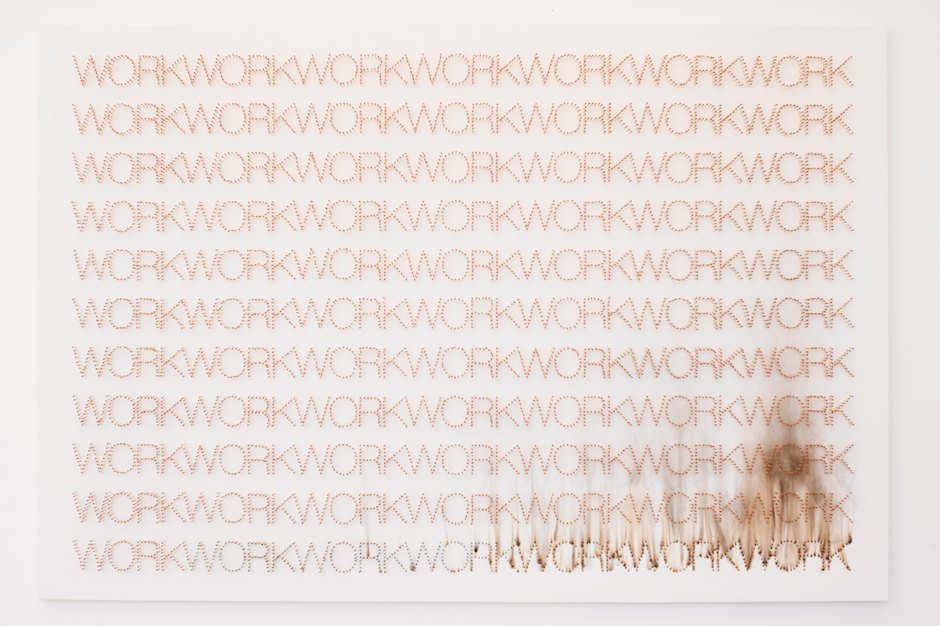
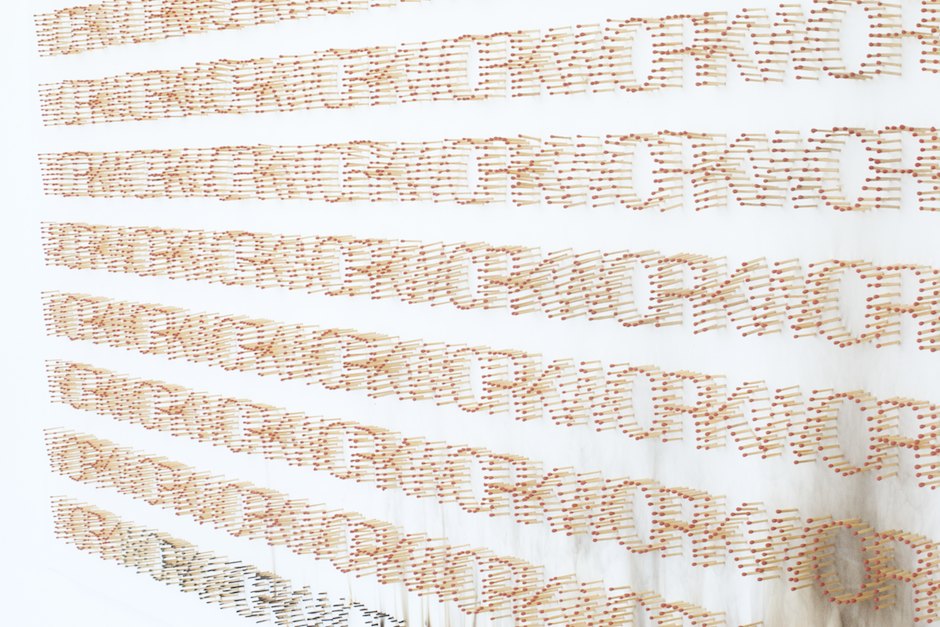
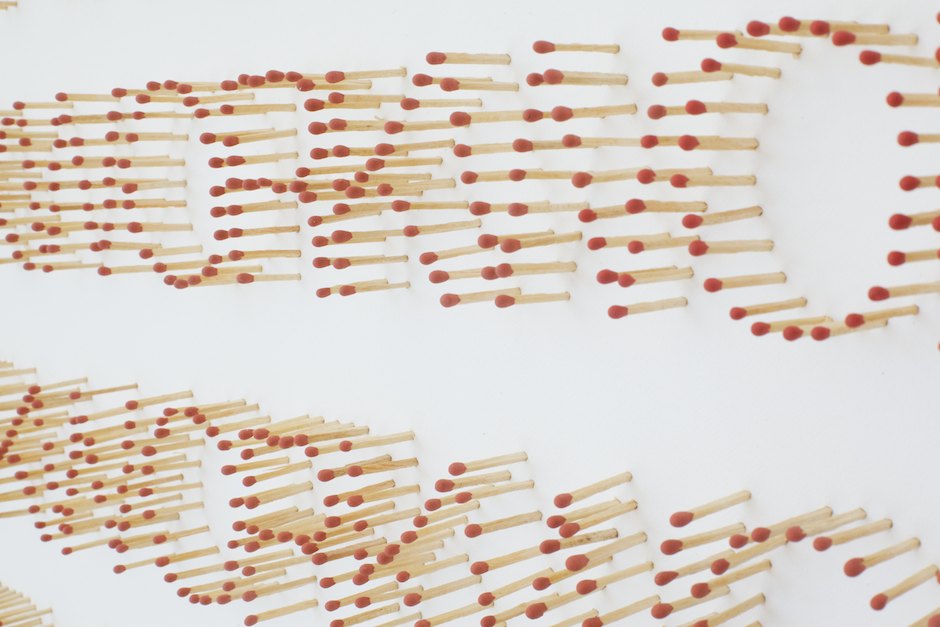
“Trust” nails, wood, 2012
Comprised of more than 15,000 nails, “Trust” shows where it’s safe to sit.

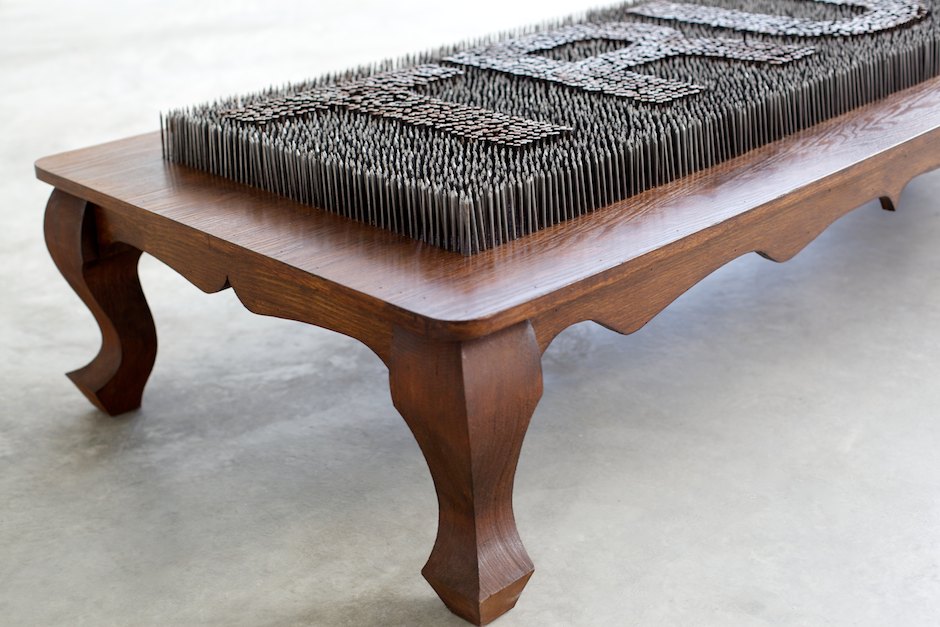
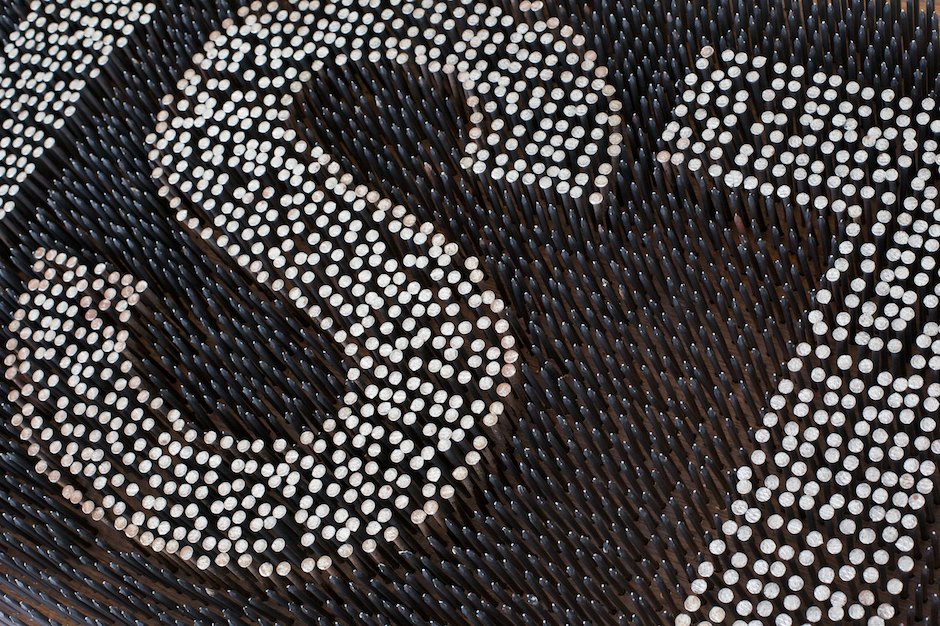
“Giving up is not an option” zinc letters with black lacquer paint, 2012
Giving up is always an option, apparently. The last three letters didn’t make it to the wall, still lying, barely painted on the ground.
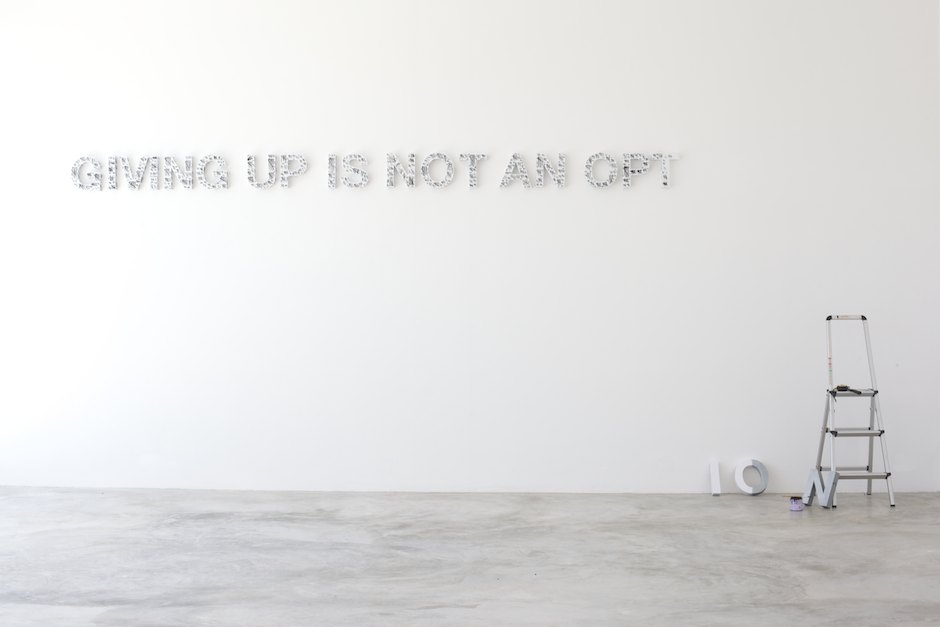
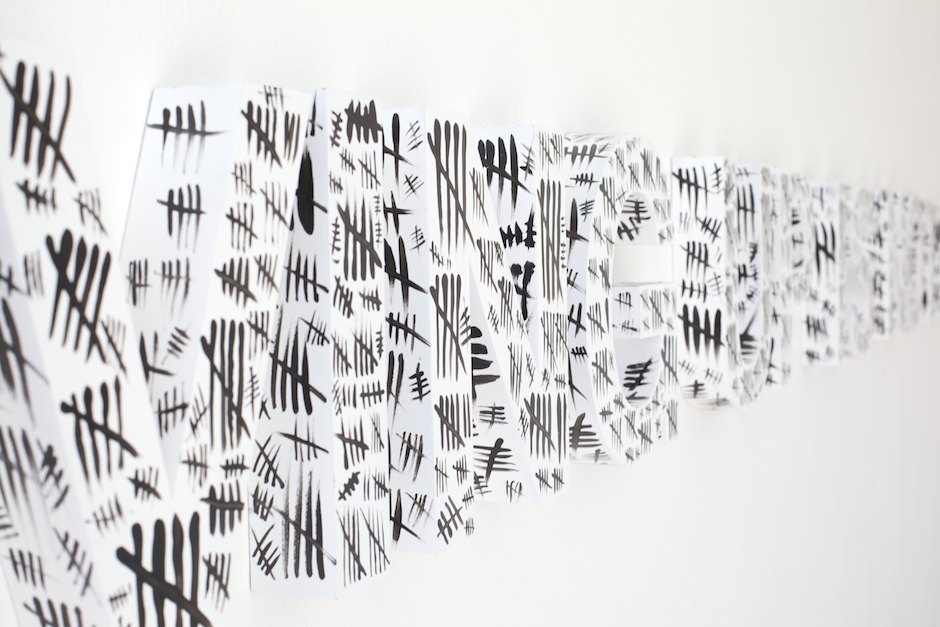
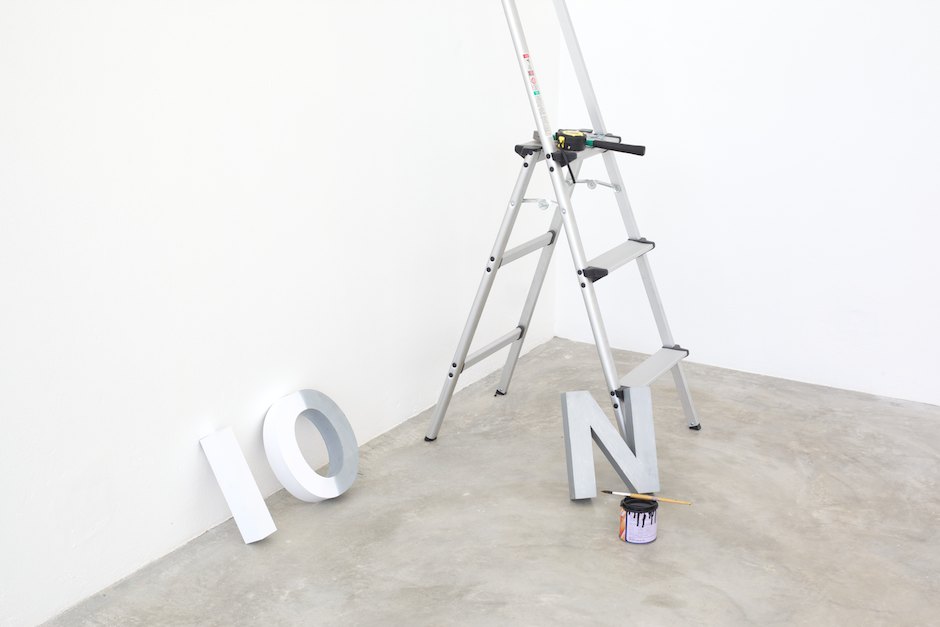
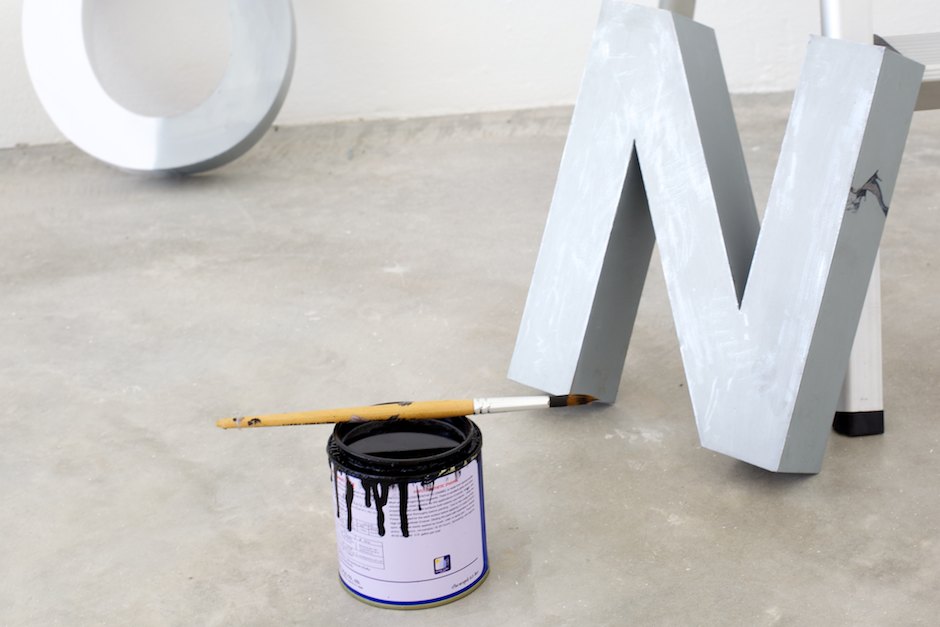
See more of Ole Ukena’s conceptual typographic sculpture on his website.
Find him on Tumblr, Twitter and Facebook.
May 15, 2013 | illustration
Tim O’Brien’s illustrations have been published in Rolling Stone, Newsweek, The New York Times and so many more – simple, conceptual images that resonate with audiences and stick a message in your brain. His personal pieces trade in celebrities and politicians for animals with bodies elegant and strong, and they persevere through hardships that make our stresses seem silly. There’s always a surreal aspect in his conceptual pieces but often they hide in subtleties, turning each illustration into a new game of “what in this picture is impossible?”
Tim is a professor at the University of Arts in Philadelphia and at the Pratt Institute in Brooklyn, and he’s lectured at The Norman Rockwell Museum, Rhode Island School of Design and the School of Visual Arts in New York City.
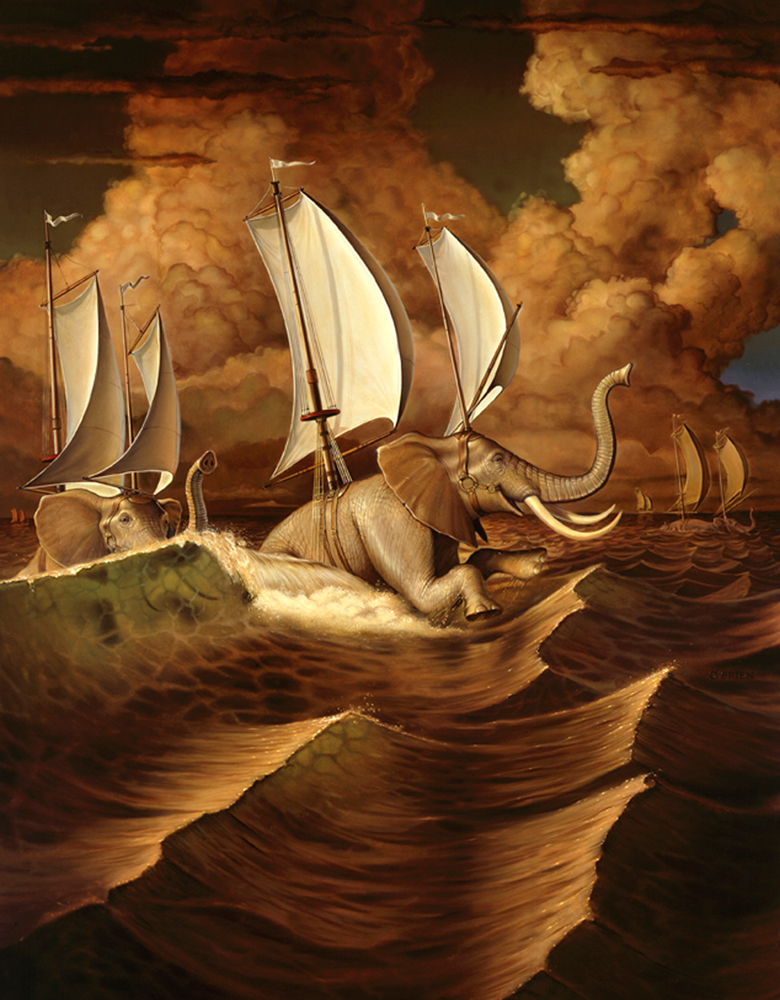
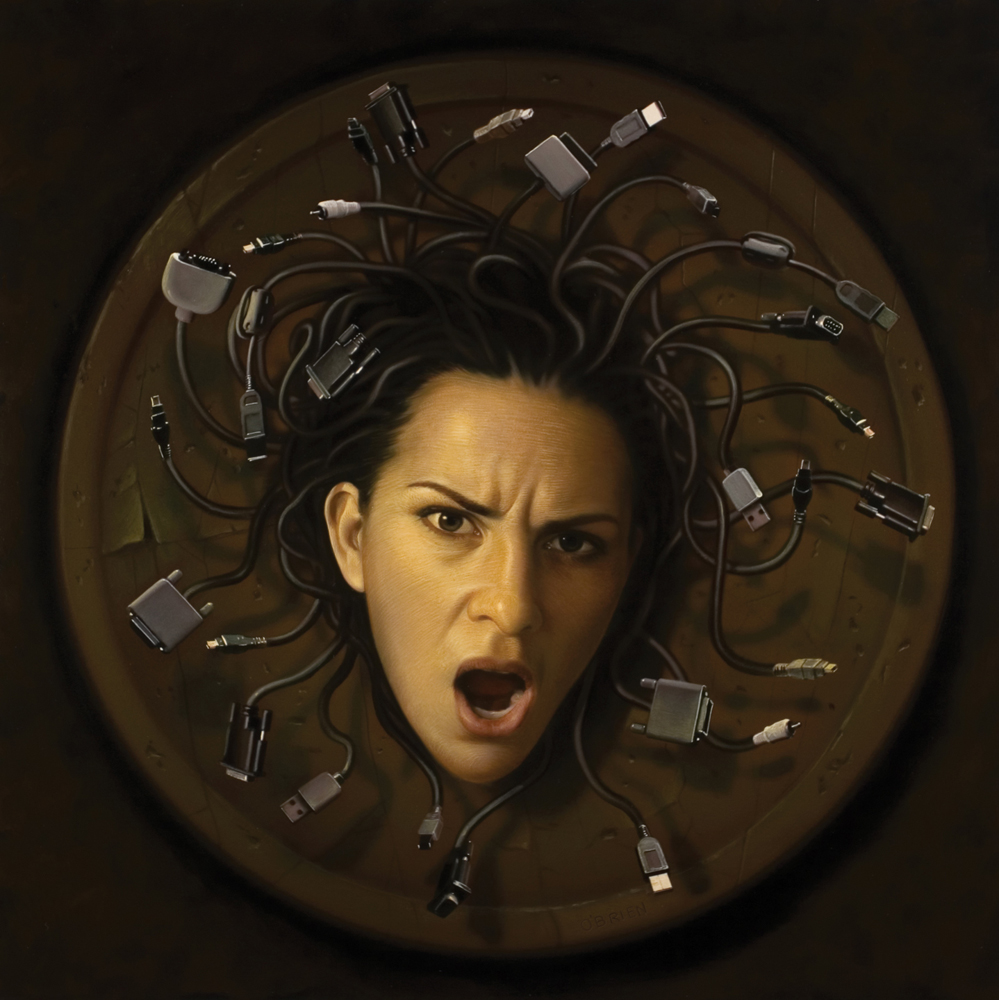

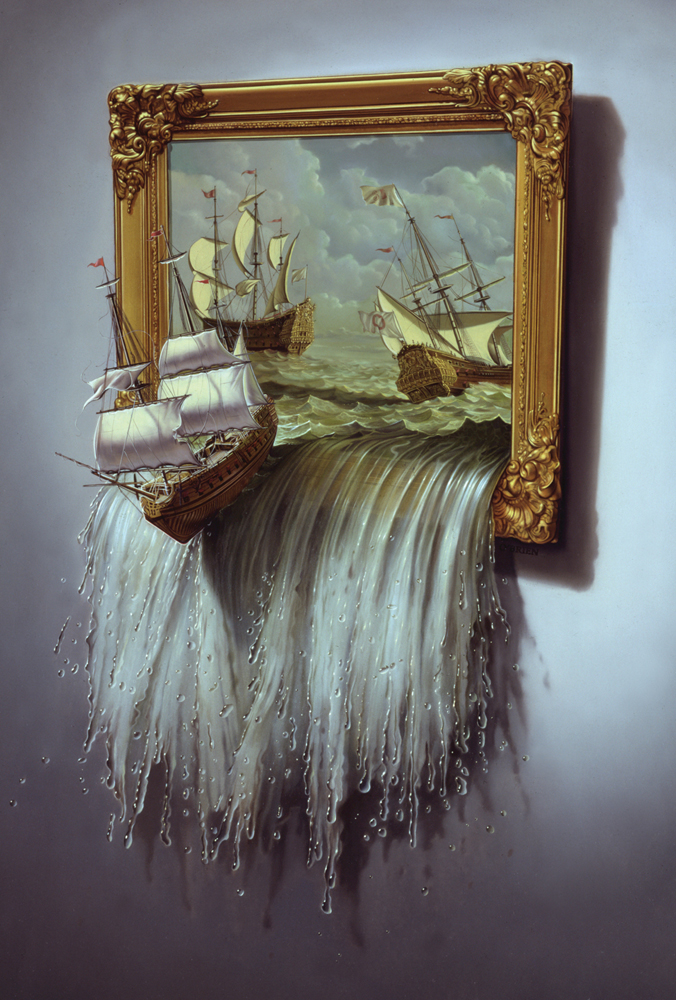
For more of Tim’s work see his website.
All images courtesy of the artist.
May 2, 2013 | apropos//ts, art about
The other night I started perusing new apps on my iPhone, and then I looked up and an hour had gone by. I don’t know how technology does it, but it’s so useful and sleek I can’t help myself. “Yes I would like organize my passwords!” “Live tv on my phone all the time? Have to have it.”
Technology is really spoiling us, and we tricked ourselves into thinking we deserve it because somewhere out there someone’s father invented it for us. Which is why it’s such a paradox that nostalgia is so in now – we probably couldn’t survive one hour without our little tethers to the universe in our smart phones, but somehow we pine for the 90s and love tv shows like Mad Men and movies like Django.
I think it’s because we’re worried about preserving the time before technology for those who won’t remember it. I’m 21 and I barely remember it, so my kids probably won’t even know what it’s like to have a car that won’t talk or maybe drive itself even. Do you think we’ll still teach our kids to drive, and will they teach theirs? Probably not, and that blows my mind.
Below you’ll find six artworks that visualize this bond that’s forming between people and our technology. They warn of dependency, surrounding us with screens and transforming us into them in amazing ways.
1. Ernst Caramelle, Video
Landscapes (1974)
[zl_mate_code name=”Orange Dynamic” label=”3″ count=”1″ who=”div” text=”Even in 1974, television was inside our heads and here a man sits with his head behind one, his face shining through the screen.”]
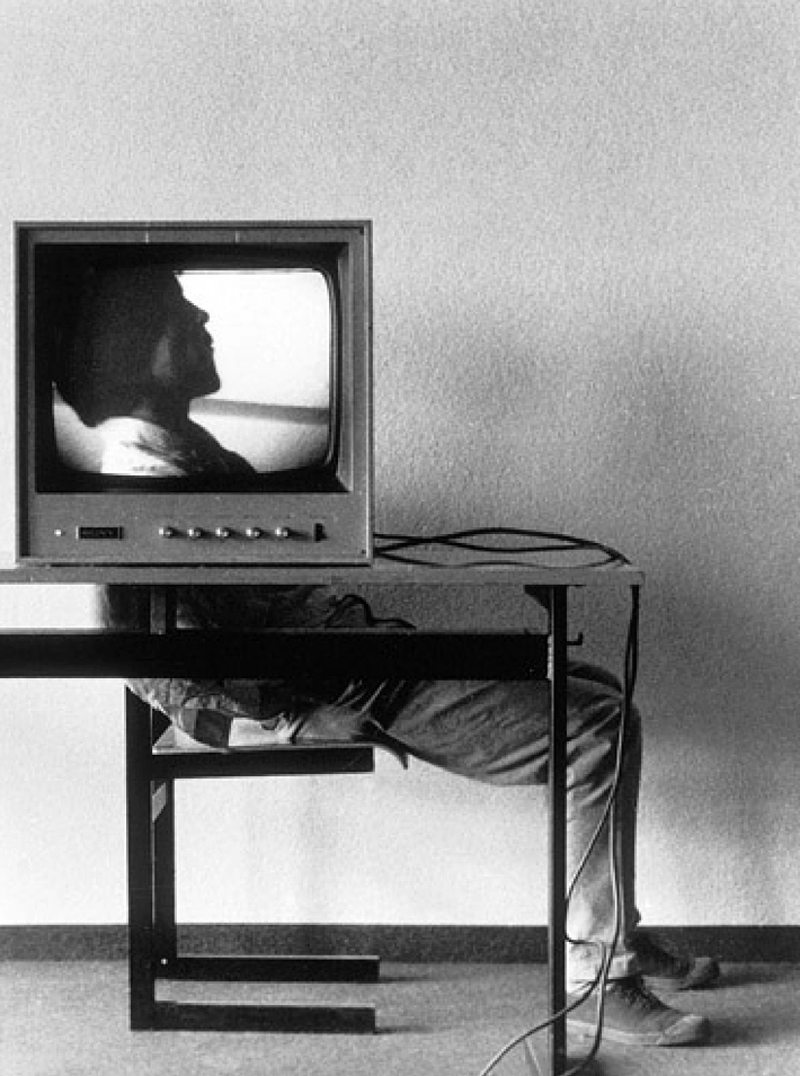
[/zl_mate_code] Source: polychronidis.tumblr.com
2. Kelley McMorris, Deeper
Understanding
[zl_mate_code name=”Pink Dynamic” label=”1″ count=”1″ who=”div” text=”A white ghost hand emerges from each screen, enveloping the girl whose fingers interlace with the hand in her laptop.”]
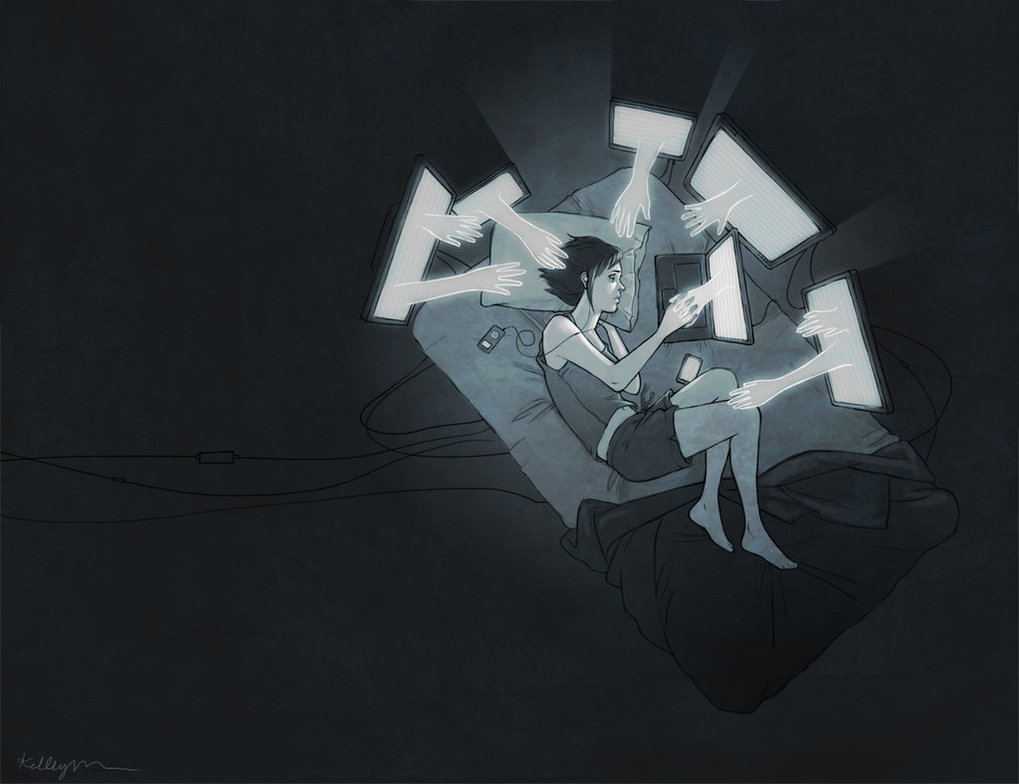
[/zl_mate_code] Source: noimnotluckyimblessedyes.tumblr.com
See more from this artist on her website.
3. David Schermann, Computer
Head
[zl_mate_code name=”Blue Dynamic” label=”2″ count=”1″ who=”div” text=”In a warm outdoor scene a man looks up toward the light, with an old computer monitor instead of a head.”]
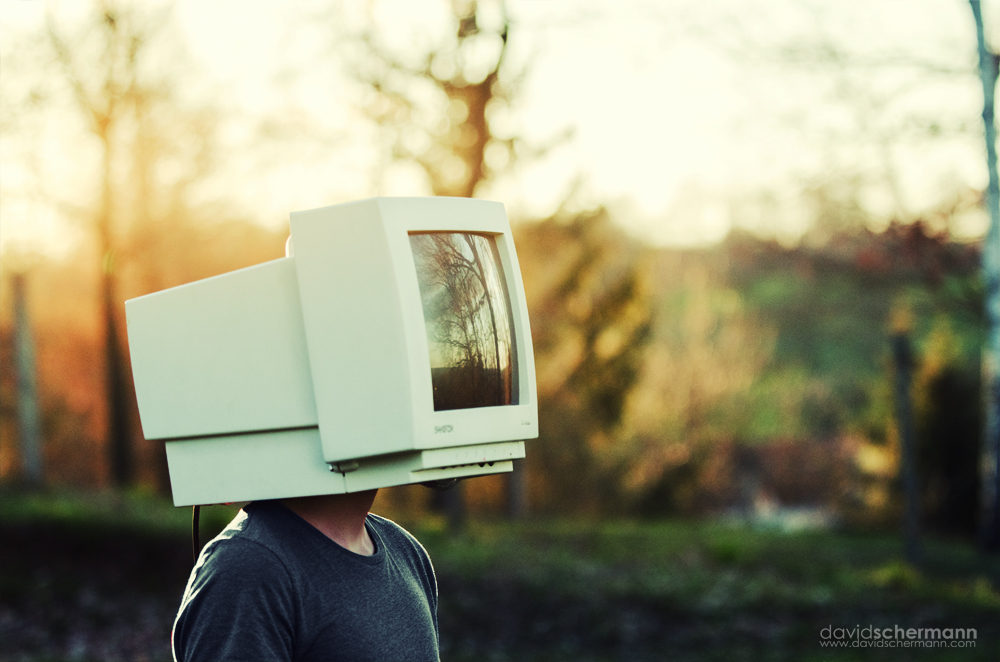
[/zl_mate_code] Source: Deviant Art
4. Jacques-Armand Cardon,
Untitled
[zl_mate_code name=”Orange Dynamic” label=”3″ count=”1″ who=”div” text=”The sphere-headed man can’t follow suit as he stands before a square hole in the wall.”]

[/zl_mate_code] Source: workman.tumblr.com
5. Brian DeYoung, Insomnia
[zl_mate_code name=”Pink Dynamic” label=”1″ count=”1″ who=”div” text=”A woman with a plug on the back of her head sits crisscross on her bed, but the outlet on her pillow isn’t three-pronged.”]
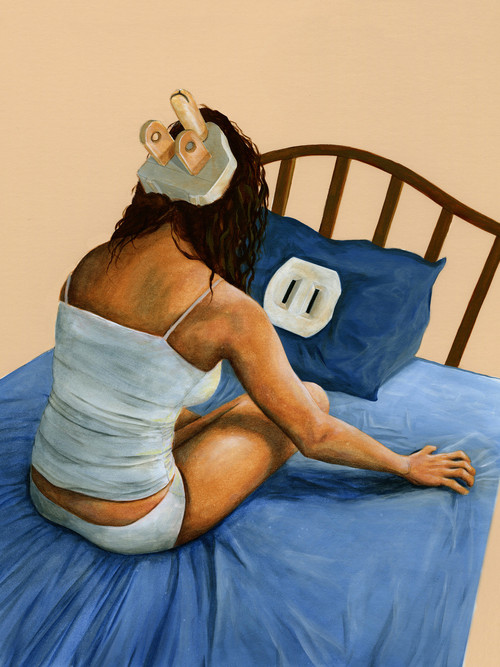
[/zl_mate_code] Source: anytimealways.tumblr.com
6. artist unknown
[zl_mate_code name=”Green Dynamic” label=”4″ count=”1″ who=”div” text=”Two giant fingers violently push a monitor through an empty-eyed open head and the mouth is vomiting brains.”]
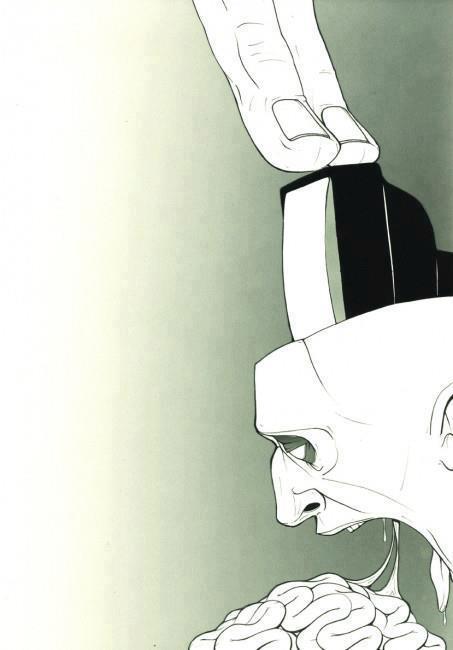
[/zl_mate_code] Source: bjorklund1.tumblr.com
If you know who created #5 & #6, please email me! Googling descriptions got me nowhere…
























